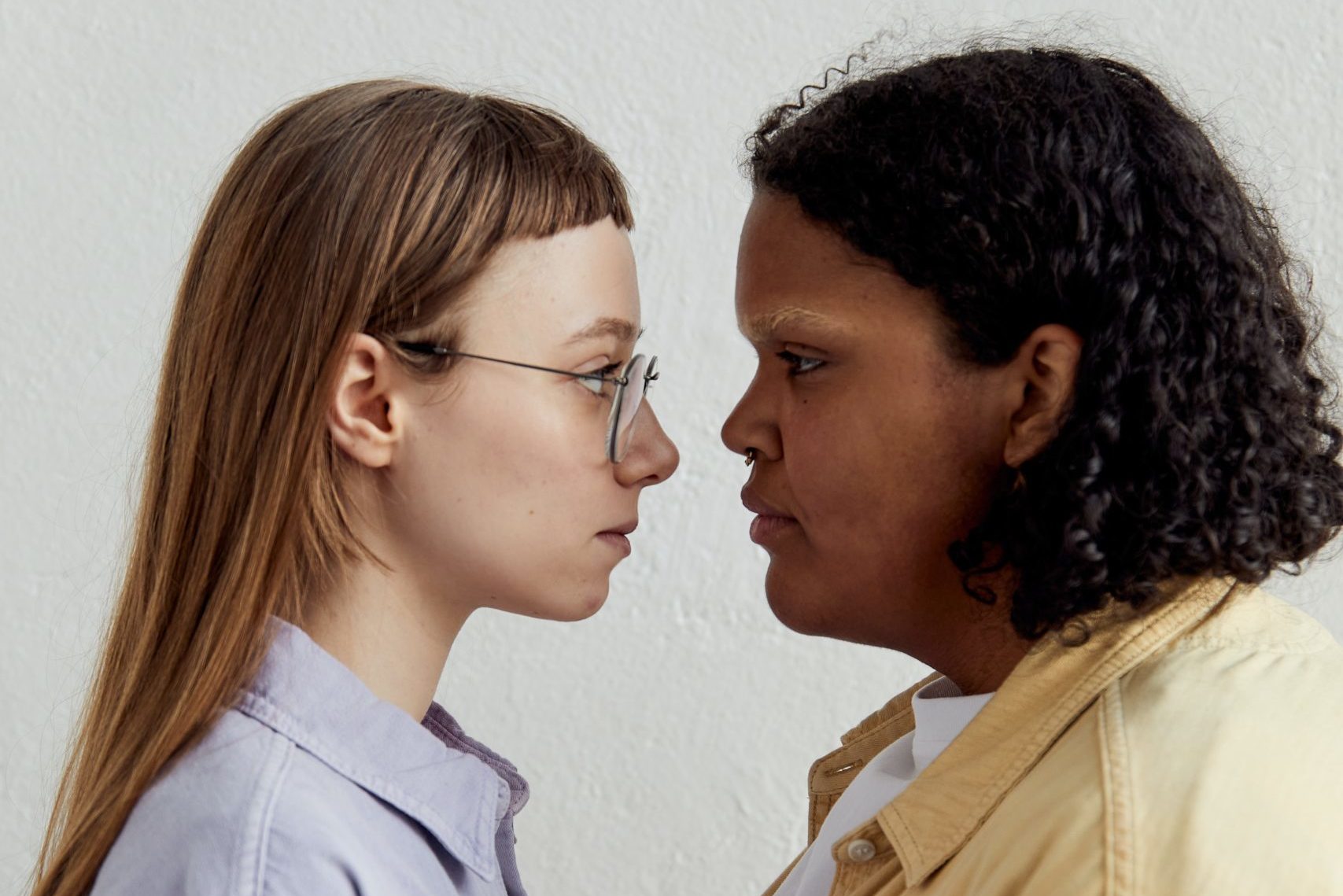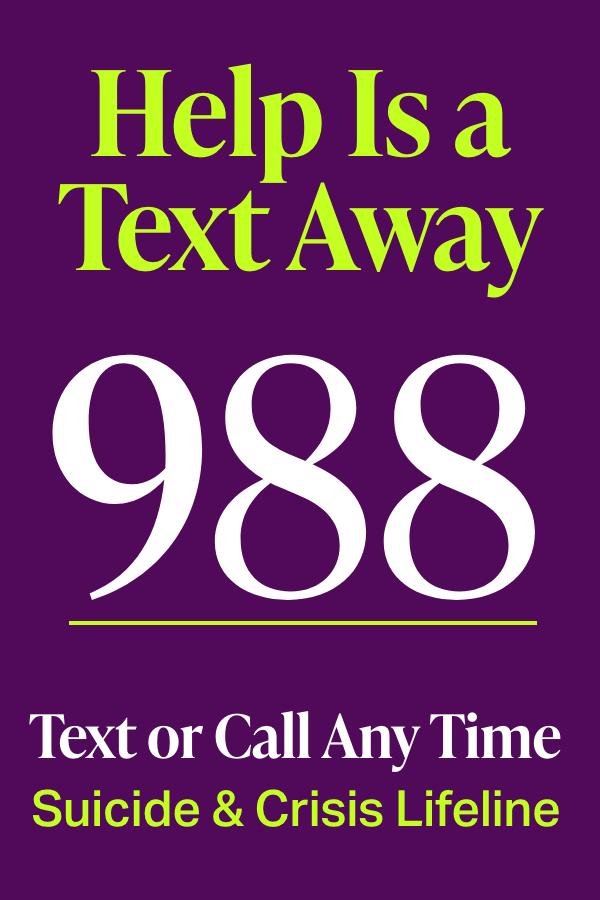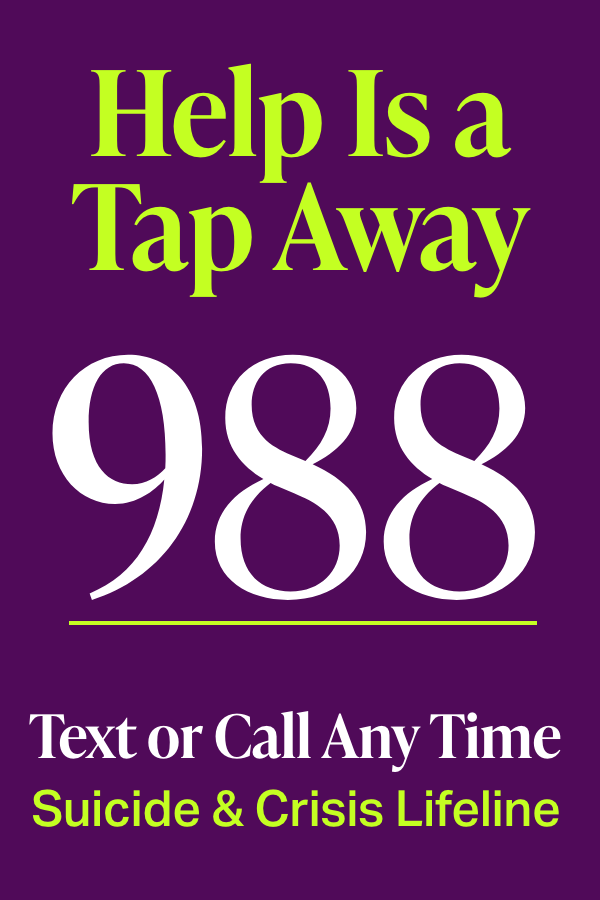What is balance? At Mental, it’s all the things that—when disrupted—mess with an otherwise good day. Thoughts intrude. Moods spiral. Obsessions grab hold and don’t let go.
The research is increasingly clear: Balance begins in your brain—and your bed. And no, we’re not talking about nodding off to “good vibes only” posts on Instagram.
Nearly everyone who suffers from depression, bipolar, and other mood disorders experiences major disruptions to their circadian rhythms and the sleep-wake cycle, according to a study in Biological Psychiatry. “Shift work, travel across time zones, and irregular social schedules tend to precipitate or exacerbate mood-related episodes,” the authors write.
Of course, finding emotional balance isn’t as simple as consistent shuteye. Imbalances in brain chemicals (including norepinephrine, serotonin, and dopamine), environmental conditions, and genetics all play a role. Even dehydration can spike your risk of mood disorders.
The Best of Mental Health 2022 solutions here aim help you regain your emotional balance—think of them as mood products. Glasses that protect against blue light (linked to insomnia), a water bottle that always keeps its cool, and computer software that casts the natural light of the sun on your face all day (even if you’re stuck on Zoom calls…all day).
Last thing: Stand on one leg and touch your nose. That’s balance too. Also, you look ridiculous.
All products featured on Mental have been selected independently and editorially. When you buy from our links, we may earn a commission.
Best Light Therapy Lamp for Mental Health
Northern Light Technologies Boxelite-OS Therapy Light Box, $204.99
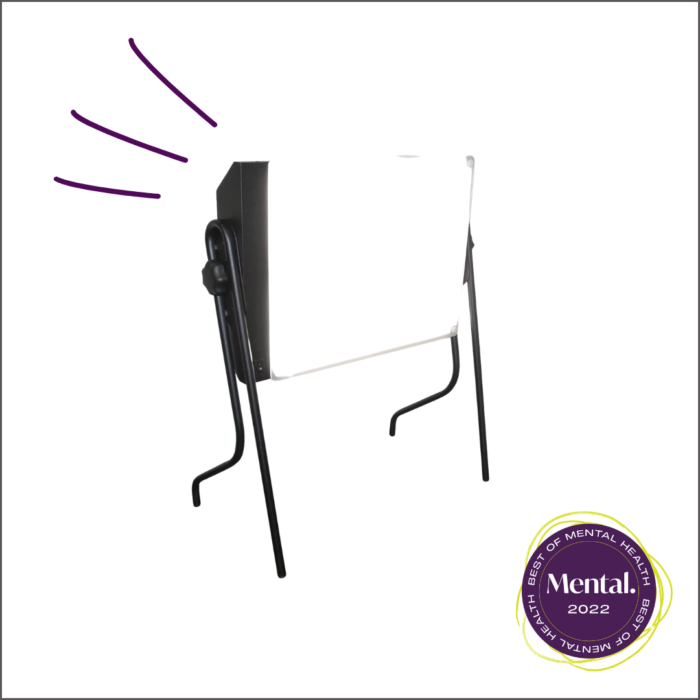 It’s huge. It’s ugly. And it’s expensive. So you know that we wouldn’t suggest this bright solution to seasonal affective disorder (SAD) if it wasn’t the best. “If you buy one of the low-end, low-priced gimmicks that are prevalent online, they’ve never been evaluated in clinical trials,” says Michael Terman, Ph.D, president of the Center for Environmental Therapeutics and professor of clinical psychology in psychiatry at Columbia University. (He adds that how some brands calculate their lux—a measure of how much light is produced—is suspect.)
It’s huge. It’s ugly. And it’s expensive. So you know that we wouldn’t suggest this bright solution to seasonal affective disorder (SAD) if it wasn’t the best. “If you buy one of the low-end, low-priced gimmicks that are prevalent online, they’ve never been evaluated in clinical trials,” says Michael Terman, Ph.D, president of the Center for Environmental Therapeutics and professor of clinical psychology in psychiatry at Columbia University. (He adds that how some brands calculate their lux—a measure of how much light is produced—is suspect.)
Dr. Terman, who has studied light therapy since the 1980s, says that your light box should offer 10,000 lux, be wide (for a full field of illumination), and hit your face at an angle and from above, the way the sun would shine down on you when taking a walk on the beach in the morning.
This NLT model ticks off everything on that list. Dr. Terman suggests both following the lamp’s directions and experimenting a bit on your own re: how long you should sit in front of it. The major SAD clinical trials dosed users for 30 minutes, he says, but you might find that overstimulating, or you may want to bump up to 45 minutes after a week for stronger effects.
Many studies have shown that light therapy combats SAD. But the benefits of light therapy go beyond warming up the winter blues. Research has shown that light therapy improves ADHD symptoms and disordered eating, namely binging. There’s also evidence that it can alleviate the depression that comes with premenstrual depressive disorders (PMDD).
Best Blue Light-Filtering Glasses
Warby Parker Blue Light Glasses, $50
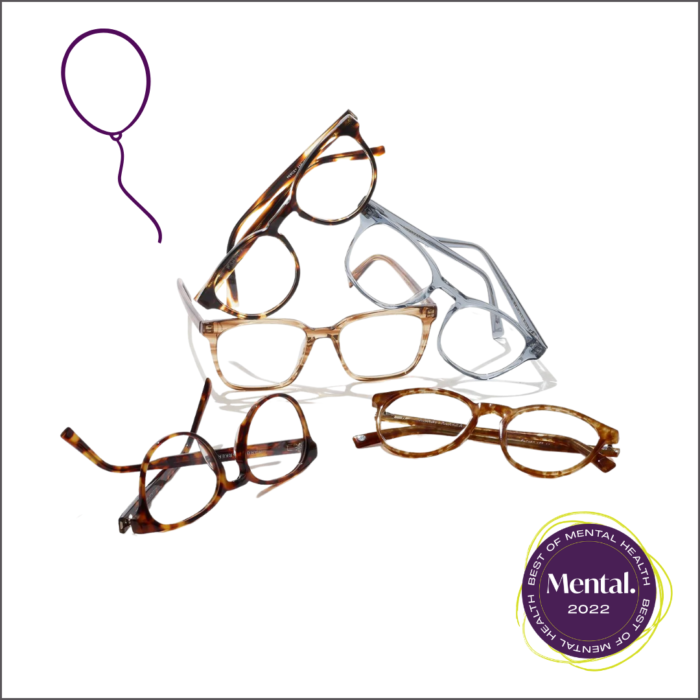 We’ve all read (probably on a screen) that blocking out some of the blue light emitted from our phone, computer, and TV is good for eye health. You may also know that blue light, especially at night, messes with circadian rhythm, which can cause problems with falling asleep and insomnia and, thus, impact mental health. “Wearing blue-light filtering glasses starting in the evening can dramatically resolve sleep problems,” says Dr. Terman.
We’ve all read (probably on a screen) that blocking out some of the blue light emitted from our phone, computer, and TV is good for eye health. You may also know that blue light, especially at night, messes with circadian rhythm, which can cause problems with falling asleep and insomnia and, thus, impact mental health. “Wearing blue-light filtering glasses starting in the evening can dramatically resolve sleep problems,” says Dr. Terman.
These glasses go beyond getting you from A to ZZZs, though. Both a case study and a randomized control trial found that wearing blue-light-blocking glasses led to “substantial decreases in manic symptoms,” making them a side-effect-free, stabilizing supplement to bipolar treatments. They might also help with autism, as experts say blue and green light exposure at night can worsen sleep-wake issues in those with the condition.
We like Warby Parker’s glasses because A) they’re mail order, and you can try them on at home before you buy, B) they offer so many cool styles to choose from, and C) we could add the blue-blocking effect to our prescription lenses for an extra $50, less than we’d pay at the optometrist. (You can get non-prescription blue-blockers for $50 flat.)
Best Blue Light-Filtering Tech
f.lux software, $0
 But wait—there’s more! Dr. Terman also recommends the free downloadable f.lux software, which mimics the natural daylight of wherever you live. “Throughout the day, the software gradually transitions your screen from a bright white to one that appears dimmer because it has deactivated the blue light,” he says. “And it’s just as easy to read and write on the changing screen.”
But wait—there’s more! Dr. Terman also recommends the free downloadable f.lux software, which mimics the natural daylight of wherever you live. “Throughout the day, the software gradually transitions your screen from a bright white to one that appears dimmer because it has deactivated the blue light,” he says. “And it’s just as easy to read and write on the changing screen.”
Best Adjustable Light Bulb
Philips E26 smart bulb – 75 W, $27.99
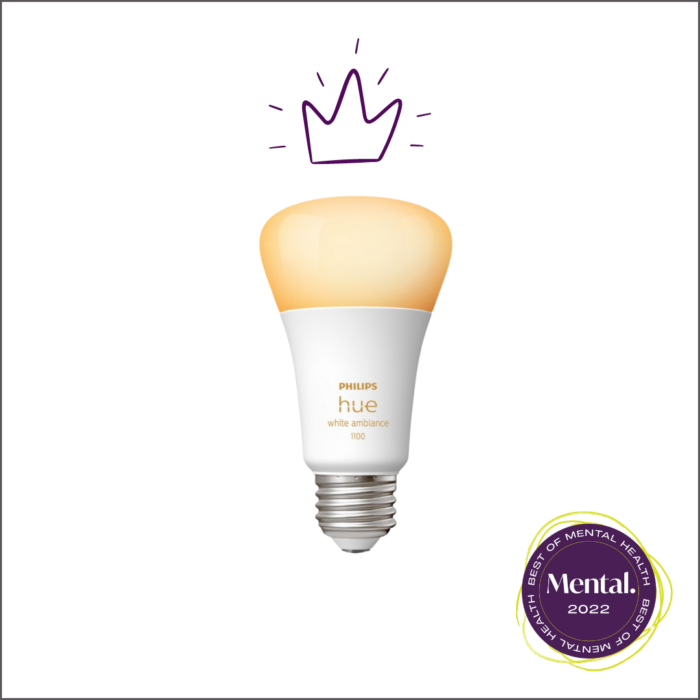 After a few months of working from home, a friend of Mental’s noticed that he was jittery after a long day (and we mean a LONG day)—and he connected it to 12 hours in his bright white-lit office. “That’s a very intelligent observation,” says Dr. Terman. “A general guideline is to restrict yourself to the warm and other lighting spectrums in the evening.”
After a few months of working from home, a friend of Mental’s noticed that he was jittery after a long day (and we mean a LONG day)—and he connected it to 12 hours in his bright white-lit office. “That’s a very intelligent observation,” says Dr. Terman. “A general guideline is to restrict yourself to the warm and other lighting spectrums in the evening.”
Cool white light has short wavelengths and keeps you alert, so it’s totally fine for the morning and afternoon. Great, even—a 2022 consensus of experts recommended short-wavelength lighting that mimics natural daylight for those times. But prolonged exposure to this light into the evening will “negatively affect your circadian rhythm system,” and could lead to insomnia, says Terman. (The 2022 paper recommended switching to lighting that blocked out shorter wavelengths at least three hours before bedtime.)
Our pal invested in some adjustable light bulbs, tuning them from cool to warm depending on whether he needs to feel energized or calm. He spends the last couple of hours of his work day in warm lighting just to begin a wind-down process, and has noticed that he is less nervous overall and sleeps better. We like this Phillips bulb for the job because it offers cool and warm light in one convenient package, and we can control it via Bluetooth, which makes us feel like we’re on The Jetsons. Plus, LED lights are highly energy-efficient and last for like a million years. We might even be the Jetsons by the time this bulb dies.
Best Chill-Keeping Water Bottle
Yeti Ramble 18 oz Water Bottle, $30
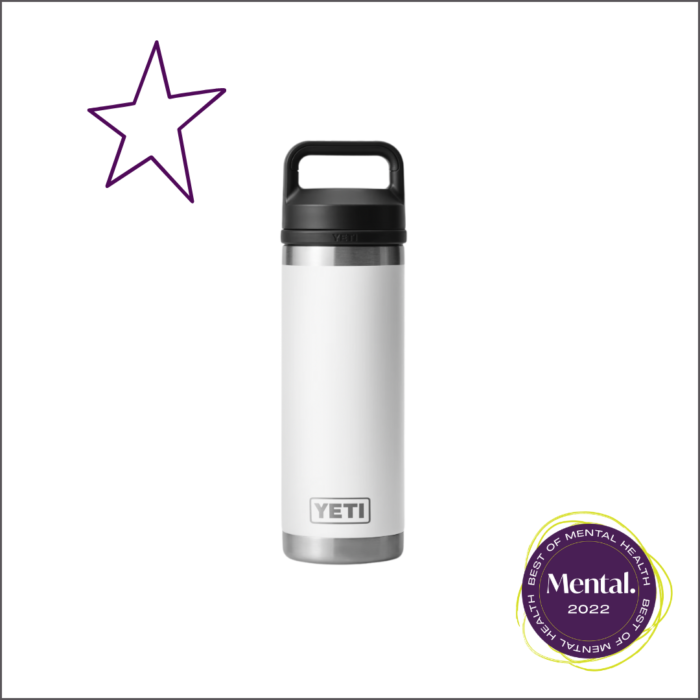
“You should drink more water!” is perhaps the most annoying truly good advice out there. And yet we’re saying it right now. That’s because there are a plethora of mental health-related reasons to drink up. Let us count them for you…
1) A study published in the World Journal of Psychiatry found that subjects who drank greater than or equal to five glasses of water a day had a significantly lower risk of depression, which dovetails with another study that looked at the opposite: Young women who experienced just 1.36 percent dehydration had “degraded mood, lower concentration, and headache symptoms.”
2) Water intake and bipolar disorder are closely linked. In one study, patients with bipolar disorder had a significant reduction of “serum fluid balance” (translation: a lower amount of water in their body) during episodes of mania. Another study, published in the International Journal of Bipolar Disorders, found that up to 70 percent of long-term users of lithium, a drug commonly prescribed for bipolar, had excessive thirst (called polydipsia).
3) Cold water can be grounding—even touching a cold glass helps, says Lori Davis, Psy.D., clinical instructor of psychology in psychiatry at Weill Cornell Medical College, who specializes in anxiety disorders and PTSD. “It’s a great coping strategy for anxiety and trauma, or anything. It shifts your mental set.”
Enter the Yeti. Whether members of this Mental set are on a hike or the couch, in the subway or the gym, we’re toting this stainless steel Yeti Ramble, ‘cause it keeps our water icier than the diamonds on a rapper’s chain. (That’s thanks to its double-wall vacuum insulation.) Other extras: It’s dishwasher-safe and doesn’t leave your hands wet (or frozen), no matter how frosty the H20.
Bonus tip: Try taking a cold shower when you’re feeling anxious. Cold water reduces cortisol and increases dopamine levels. Didn’t you wonder why distressed movie characters are always splashing their faces with it? Because: science!
Best Hand Cream for Imbalanced Skin
Aveeno Eczema Therapy Daily Moisturizing Cream, $19.67
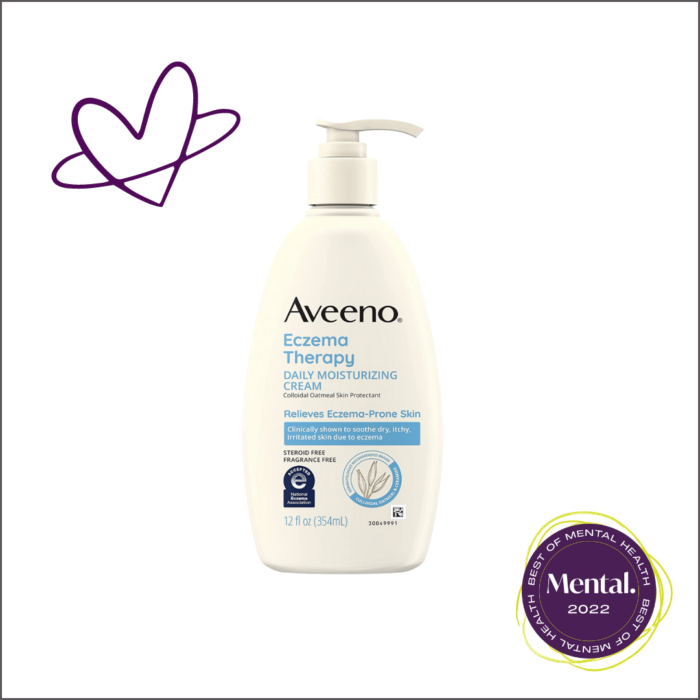
Imagine a different kind of balance, the skin kind—the kind that leaves your hands red, sore, and sometimes even bleeding after you’ve washed then 27 times a day due to OCD. How do you rebalance your skin? Most people, when considering the best hand cream for dryness, immediately picture a thick ointment—but truth is, those mostly just trap existing moisture in. When you’ve got no moisture left, you need ingredients that put more of it in.
We’ve found no better option than Aveeno’s eczema cream. It coddles sore hands like a Louboutin at the Leather Spa with a three-tiered ingredient approach: Glycerin rehydrates by drawing moisture from the air into your skin. Ceramides refortify the skin barrier stripped away from all that water exposure. And colloidal oatmeal, an anti-inflammatory, soothes and softens. (What’s not in this cream? Fragrance, which can irritate sensitive skin.) Altogether, if you put this on before bed, you’ll wake up with less red, less ouchy hands, and we find it even seems to seal up little cuts overnight. No wonder it’s got the National Eczema Association Seal of Approval.
Want more of the most-vetted mood products and tips for mental health? Sign up for our newsletter and get Mental in your inbox!
Check Out Our Other Best of Mental Health 2022 Categories
I Just Cried (or: I Couldn’t Sleep)
Don’t Tell Me to Calm Down (But I Probably Should)
Geek Out on Our Sources
INTRO
Circadian Rhythms and Mood: https://www.ncbi.nlm.nih.gov/pmc/articles/PMC3725187/
LIGHT THERAPY LAMP FOR MENTAL HEALTH
Light Therapy for SAD (1): http://www.ederma.net/wp-content/uploads/2015/04/Terman-1989-Neuropsychopharm.pdf
Light Therapy for SAD (2): https://www.ncbi.nlm.nih.gov/pmc/articles/PMC2913518/
Light Therapy for ADHD: https://pubmed.ncbi.nlm.nih.gov/17107243/
Light Therapy for Eating Disorders: https://pubmed.ncbi.nlm.nih.gov/27835724/
Light Therapy for PMDD: https://pubmed.ncbi.nlm.nih.gov/10482337/
BLUE-LIGHT FILTERING GLASSES AND TECH
Blue Light and Eye Health: https://pubmed.ncbi.nlm.nih.gov/29543853/
Blue-Light-Blocking Glasses and Bipolar Disorder: https://pubmed.ncbi.nlm.nih.gov/34030534/
Blue Light and Autism: https://www.spectrumnews.org/opinion/viewpoint/electronic-glow-may-disrupt-sleep-people-spectrum/
ADJUSTABLE LIGHT BULB
Home Light, Sleep, and Wakefulness: https://journals.plos.org/plosbiology/article?id=10.1371/journal.pbio.3001571#sec003
CHILL-KEEPING WATER BOTTLE
Water and Depression: https://www.ncbi.nlm.nih.gov/pmc/articles/PMC6147771/
Mild Dehydration and Mood: https://pubmed.ncbi.nlm.nih.gov/22190027/
Water Levels and Bipolar Disorder: https://pubmed.ncbi.nlm.nih.gov/25142404/
Lithium Use and Excessive Thirst: https://www.ncbi.nlm.nih.gov/pmc/articles/PMC5164879/
Cold Water and Cortisol and Dopamine: https://pubmed.ncbi.nlm.nih.gov/10751106/
